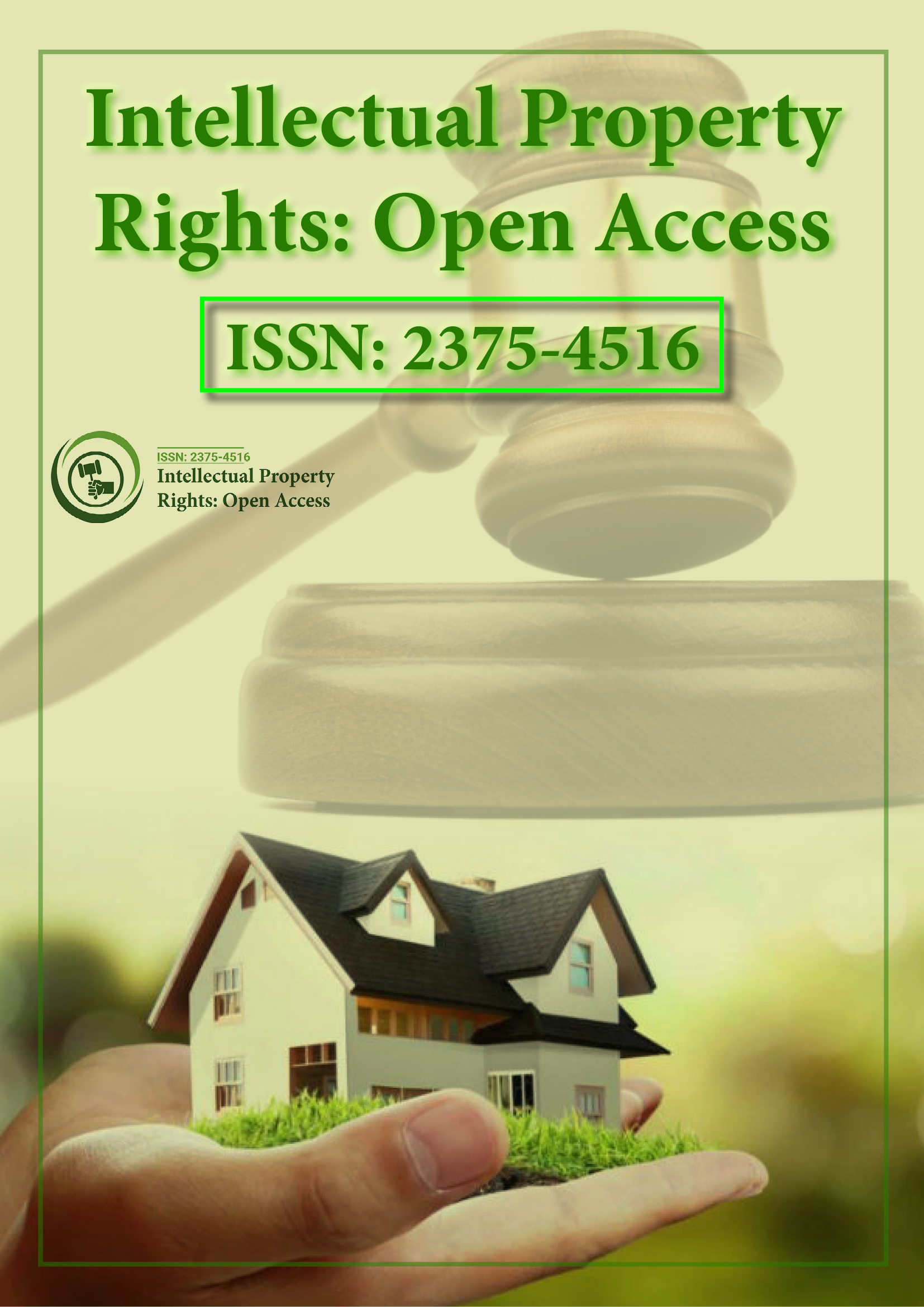Indexed In
- Open J Gate
- RefSeek
- Hamdard University
- EBSCO A-Z
- OCLC- WorldCat
- SWB online catalog
- Publons
Useful Links
Share This Page
Journal Flyer

Open Access Journals
- Agri and Aquaculture
- Biochemistry
- Bioinformatics & Systems Biology
- Business & Management
- Chemistry
- Clinical Sciences
- Engineering
- Food & Nutrition
- General Science
- Genetics & Molecular Biology
- Immunology & Microbiology
- Medical Sciences
- Neuroscience & Psychology
- Nursing & Health Care
- Pharmaceutical Sciences
Opinion Article - (2022) Volume 10, Issue 3
The Importance of Copyright Laws and Property Protection
Hanyu Wen*Received: 20-Jul-2022, Manuscript No. IPR-22-17779; Editor assigned: 25-Jul-2022, Pre QC No. IPR-22-17779(PQ); Reviewed: 08-Aug-2022, QC No. IPR-22-17779; Revised: 16-Aug-2022, Manuscript No. IPR-22-17779(R); Published: 23-Aug-2022, DOI: 10.35248/2375-4516.22.10.209
About the Study
Copyrights are a type of property protection that grants its owner the right to reproduce their works for a set period of time. Copyrights are automatic and start the instant that the work is typed and exists in tangible form. They're most frequently applied to Poetry, novels, speeches, and songs are examples of literary works. Computer programming, Films, plays, and television shows, Building paintings, sculptures, and designs the conception of copyright was first developed in European countries. In reaction to the printing of "scandalous books and pamphlets", Parliament passed the Licensing of the Press Act 1662, which required all supposed publications to be registered with the government-approved Stationers' Company, giving the Stationers the right to manage what material may well be written.
The Statute of Anne, enacted in 1710 in European countries and European nations, provided the primary legislation to guard copyrights. The Copyright Act of 1814 extended a lot of rights for authors, but failed to shield British authors from reissue within the U.S. The national capital International Copyright Convention of 1886 finally provided protection for authors among the countries. The World Health Organization signed the agreement, though the U.S. failed to be part of the national capital Convention till 1989.In the US, the Constitution grants Congress the right to ascertain copyright and patent laws. Shortly after the Constitution was passed, Congress enacted the Copyright Act of 1790, modeling it after the Statute of Anne. Whereas national law protected authors’ printed works, authority was granted to the states to safeguard authors’ unpublished works.
The most recent major overhaul of copyright within the United States, the 1976 Copyright Act, extended federal copyright to works as soon as they're created and "fixed," while not requiring publication or registration. State law continues to apply to unpublished works that aren't otherwise proprietary by federal law. This act conjointly modified the calculation of copyright terms from a hard and fast term to "life of the author and fifty years". These changes brought the United States nearer to conformity with the Berne Convention, and in 1989 the United States revised its copyright law and joined the Berne Convention formally. Copyright laws allow products of inventive human activities, such as literary and creative works, to be preferentially exploited and incentivized. Different cultural attitudes, social organizations, economic models, and legal frameworks are seen to account for why copyright emerged in Europe and not, as an example, in Asia.
In the middle Ages in Europe, there was usually a scarcity of any conception of literary property thanks to the final relations of production, the particular organization of literary production, and also the role of culture in society. The latter refers to the tendency of oral societies, like that of Europe within the mediaeval period, to look at data as the product and expression of the collective, instead of to envision it as individual property. However, with copyright laws, intellectual production is seen as a product of a private person, with attendant rights.
The foremost vital purpose is that patent and copyright laws support the enlargement of the variety of inventive human activities that may be commoditized. This parallels the ways in which a laissez-faire economy leads to the commodification of many aspects of social life that earlier had no financial or intrinsic value. Copyright has developed into an inspiration that includes a vital impact on nearly every fashionable business, together with not simply literary composition, but also styles of inventive work like sound recordings, films, images, software, and design.
Conclusion
The entire method of copyright takes approximately 8-9 months. You may use our copyright registration service if you so desire. Moreover, you'll simply register your copyright with Vakil search. Furthermore, our specialists can handle and supervise the complete method for you, from documentation to ultimate approval.
Citation: Wen H (2022) The Importance of Copyright Laws and Property Protection. Intel Prop Rights.10:209.
Copyright: © 2022Wen H This is an open access article distributed under the terms of the Creative Commons Attribution License, which permits unrestricted use, distribution, and reproduction in any medium, provided the original author and source are credited.
